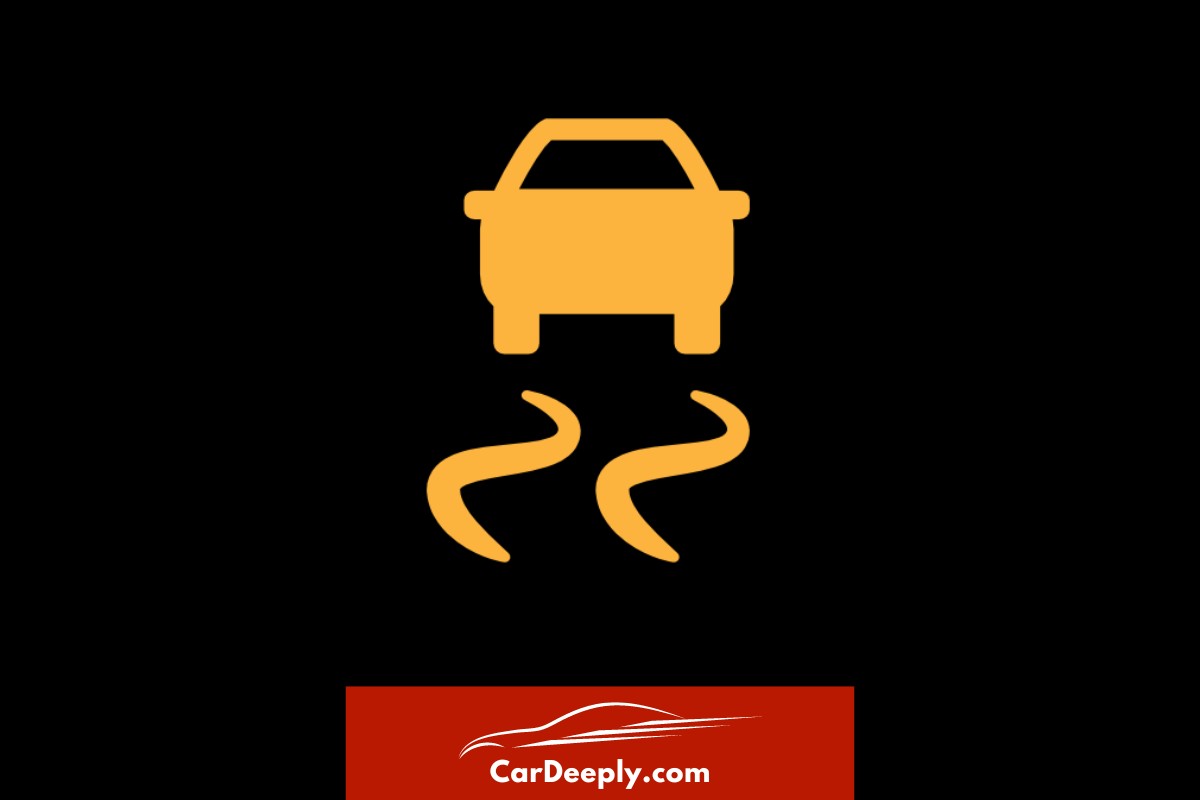Ever been puzzled by that traction control light on your dashboard?
This guide is your ticket to understanding and troubleshooting this often misunderstood feature. By diving in, you’ll dodge common mistakes, save money, and gain peace of mind.
Here’s a sneak peek of what’s in store:
- Unraveling the mystery of traction control.
- Decoding the reasons behind the warning light.
- Practical tips for safe and informed driving.
Let’s hit the road to knowledge together!
Advertising links are marked with *. We receive a small commission on sales, nothing changes for you.
Key Takeaways
- Traction Control System (TCS) prevents wheel slip during acceleration, enhancing vehicle safety.
- TCS uses sensors and smart technology to monitor and control wheel speed.
- The traction control light communicates the status and issues of the TCS.
- Common reasons for an illuminated traction control light include faulty sensors and wiring damage.
- Driving with the traction control light on is possible but requires caution and professional inspection.
Understanding Traction Control
Have you ever wondered what that “TCS” button in your car does?
Let’s dive into the world of traction control and shed some light on this essential safety feature.
What is Traction Control?

Traction control, often called TCS, is a safety feature in almost all modern vehicles. Its main job? To prevent your wheels from slipping when you accelerate, especially on slippery surfaces like ice, snow, or even just a wet road.
Traction control works by reducing the engine power or momentarily applying the brakes to the wheels, starting to lose grip. The result? Your car stays stable, and you remain in control.
The Evolution of Traction Control
Traction control only appeared after some time. It’s the result of years of innovation in automotive safety. Initially, it was a luxury feature available only in high-end cars. But as technology advanced, it became a standard feature in almost all vehicles.
How Does Traction Control Work?
Now, let’s get into the nitty-gritty. How does traction control work? It’s all about sensors and smart technology.
- Sensors: These are the eyes of the traction control system. They monitor the speed of each wheel and send this information to the car’s computer.
- The Car’s Computer: This is the brain of the operation. It analyzes the data from the sensors. If it detects that one wheel is spinning faster than the others (a sign of wheel slip), it springs into action.
- Reducing Power or Applying Brakes: Depending on the situation, the computer will either reduce engine power or apply the brakes to the slipping wheel. This helps the wheel regain traction and prevents the car from skidding.
Traction Control vs. Stability Control
You might have heard about another feature called stability control. It’s similar to traction control, but there’s a key difference.
While traction control prevents wheel slip during acceleration, stability control helps you maintain control of your car during turns. It can apply the brakes or reduce engine power to individual wheels to help keep your vehicle on its intended path.
Locating the Traction Control Button
Finally, let’s talk about the traction control button. It’s usually located on the dashboard or the center console and is often labeled “TCS” or “TCS Off.”
Pressing this button will typically turn the traction control system off, which you might need to do if you’re stuck in snow or mud and must rock the car back and forth to get out.
But it’s best to leave the traction control on in normal driving conditions for your safety.
That’s it for the basics of traction control. In the next part, we’ll delve into the meaning of the traction control light and what to do if it comes on.
Traction Control Light: Decoding the Signals
Now that we’ve got a handle on traction control let’s turn our attention to that little light on your dashboard. It’s more than just a decoration – it’s a communication tool.
What Does the Traction Control Light Mean?
The traction control light is like a messenger. It pops up on your dashboard to tell you about your traction control system. But what exactly is it trying to say?
Here’s the deal:
- If the light turns on briefly and then goes off, it’s just doing a routine check. It’s like it’s saying, “Just checking in. All systems go!”
- If the light comes on and stays on, it tells you that the traction control system is off. This could be because you’ve turned it off manually.
- If the light comes on and starts flashing, it’s a warning that the traction control system is actively working to prevent wheel slip.
Common Reasons for an Illuminated Traction Control Light
So, what if the traction control light comes on and stays on? It’s time to play detective. Here are six common culprits:
- Faulty Wheel Speed Sensor: This sensor tells the traction control system how fast your wheels spin. If it’s not working right, the system gets confused, and the light comes on.
- Inoperable Yaw Sensor: This sensor measures your car’s rotation around its vertical axis. The traction control system can’t do its job properly if it’s not working.
- Faulty Steering Angle Sensor: This sensor tells the traction control system the angle of the steering wheel. If it fails, the light comes on.
- Malfunctioning ABS System: The ABS and the traction control system are closely linked. If the ABS has a problem, the traction control light might come on.
- Wiring Damage: If the wiring to any of these sensors is damaged, the traction control system might get false information and trigger the light.
- TCS Needs Reprogramming: Sometimes, the traction control system might need reprogrammed or restarted.
Is It Safe to Drive With the Traction Control Light On?
Here’s the million-dollar question: Can you drive with the traction control light on?
The short answer is yes but with caution. If the light is on, the traction control system is off. Your car is more prone to wheel slip, especially in slippery conditions.
So if you see the light, slow down, drive carefully, and get your vehicle checked as soon as possible.
How to Fix a Faulty Traction Control Light
If the traction control light is on, the first step is to try resetting it. Turn off the engine, wait a few minutes, and restart the car. If the light goes off, you’re good to go. If not, it’s time to call in the professionals.
Remember, the traction control system is there to keep you safe. If the light is on, it’s telling you something isn’t right. Don’t ignore it – get it checked out.
That’s it for our deep dive into traction control and the traction control light. Drive safe, stay informed, and remember – knowledge is power!
Frequently Asked Questions
Can I turn off the traction control system permanently?
While turning off the traction control system using the TCS button is possible, keeping it off permanently is not recommended. The system enhances your vehicle’s stability, especially in slippery conditions. Driving without it can increase the risk of losing control of your car.
Does traction control affect fuel efficiency?
Traction control itself doesn’t directly affect fuel efficiency. However, if the system is constantly engaged due to poor driving conditions or aggressive driving, it could lead to slightly increased fuel consumption.
This is because the system may reduce engine power or apply the brakes to maintain traction.
Is there a difference between traction control systems in different types of vehicles?
Yes, there can be differences. While the basic function of maintaining traction is the same, the system’s sophistication and responsiveness can vary.
For instance, performance-oriented or off-road vehicles may have more advanced traction control systems that can be adjusted based on driving conditions.
What should I do if the traction control light comes on while driving in normal conditions?
If the traction control light comes on during normal driving conditions, it could indicate a problem with the system. It’s recommended to have your vehicle inspected by a professional.
They can diagnose the issue, which could be anything from a faulty sensor to a need for system reprogramming.
Does the traction control system require regular maintenance?
Generally, the traction control system doesn’t require regular maintenance. However, keeping an eye on the traction control light is important. If it comes on and stays on, it’s time to inspect your vehicle.
Regular maintenance of related systems, like the brakes and tires, also helps ensure the traction control system works properly.

Sebastian loves convertibles and drove a BMW 335i for a long time (325 hp is just a dream). Today, with two children, he is more concerned with SUVs and family-friendly vehicles. In addition to an Audi A4 Avant, he also drives a Cupra Formentor VZ – even as a family man, you can’t do without speed. Get to know Sebastian better and visit the About Us page.
Advertising links are marked with *. We receive a small commission on sales, nothing changes for you.
